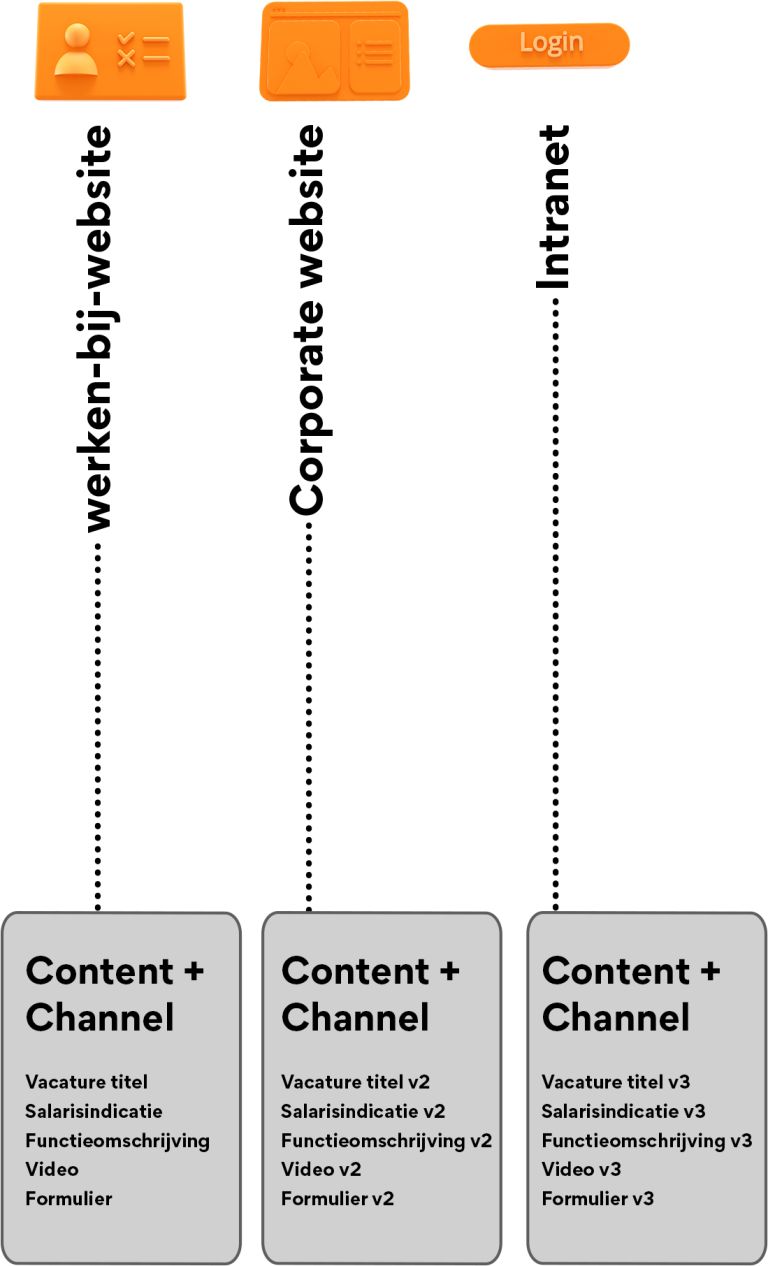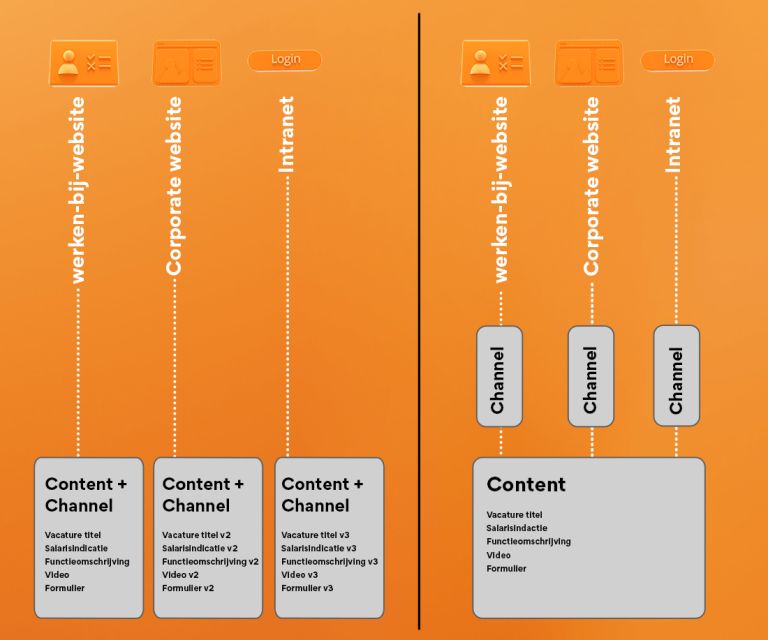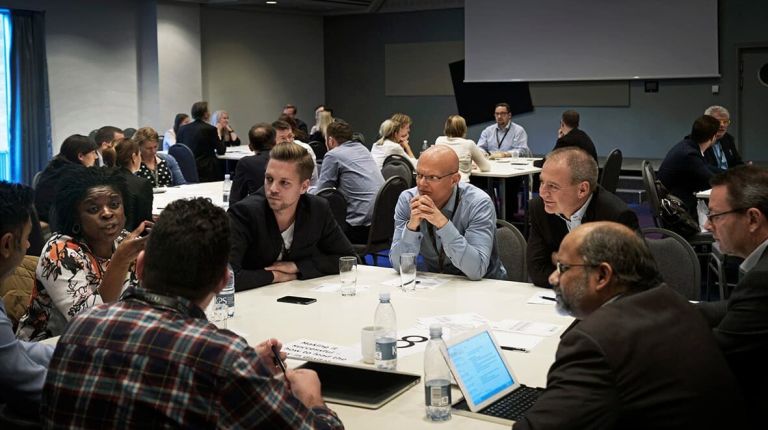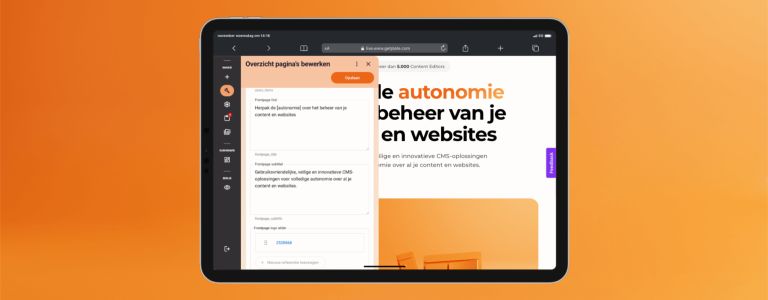
Why Content Marketers are in need for not one but two CMSs
In the research that we do here at Plate into the future of Content Management, the insight arises that a (Content) Marketer actually needs not one but two different CMSs. And when we talk about a CMS, do we all understand what that means or have we filled our CMSs with functionalities so much that they no longer do what they should do? In this blog I will take you on a thought experiment.
What does the marketer say they need?
In the conversations we have, it increasingly emerges that a marketer needs two different types of systems:
- A Content Management System where the focus is purely on the modular composition of content;
- A Channel Management System, where the focus is on translating the content to a channel, for example a web page.
In many traditional Content Management Systems, both components - content and channel - are offered together.
Option 1: Traditional

Option 2: Seperate Content and Channel

The advantage of Option 1, where Content and Channel are in one system, is also the immediate bottleneck. A small example to clarify that.
Let's say you have a Content Marketer vacancy in your organization that you want to promote. In this case, the content is a 'Vacancy for Content Marketer'. First you put together the content of this vacancy. This can include a title, introduction text, salary indication, job description, video about the culture and an application form.
Once you have defined all the content, you start creating the channel experience. And for that you first define how you want to promote this vacancy. In this case, you want to place the vacancy on both the corporate and careers website of your company. You also want to bring the vacancy to the attention of your own employees via the intranet. The intranet is an app on employees' phones. So we distinguish three different channels:
- Corporate website
- Careers website focusing on employer branding
- Intranet via a mobile app

In the drawings above you can see how the above scenario looks technically in a traditional CMS (where content and channel are combined) and in a system (or systems) that has both functions separated. What is immediately noticeable is that with the traditional CMS you have to add content separately for each channel and therefore actually need a separate system for each channel. As soon as you have to keep track of content in multiple places, you spend more time setting it up and you don't have one place where you can make a change centrally (single-source-of-truth). Suppose the salary indication increases by 300 euros, you have to change this in three different places in the traditional setup.
In the other scenario, you only need to do that in one place. There you choose per channel which content you do or do not want to use. Suppose you only want to mention the salary indication on the careers website and the intranet, then you have the option to do so.
Or suppose you promise your team a 1000 euro bonus on the intranet if they refer someone, then you create a piece of content in the Content Manager and then use it only within the Channel Manager for the intranet.
Why shouldn't you mix channel and content?
In a channel you give form and function to content, you create an experience. If you interweave form and content, you will eventually run into the following issues if you want to publish content at scale.
- Double work in placing and maintaining content
- No single source of truth (SSOT)
- Multiple licenses for Content Systems
- Technical maintenance is more complex
Update 21-11-2024
This week, we’re launching our brand-new headless CMS product, Plate Delta. This smart CMS is fully built around the concept of ‘structured content.’ It assists content managers in efficiently storing content and reusing it through smart detection and easy, flexible content models. Want to learn more? Check out the Delta CMS page.







